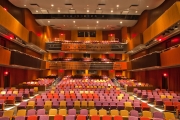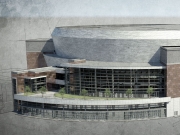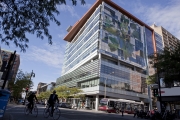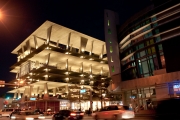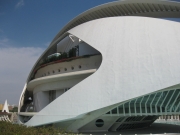South Miami-Dade Cultural Arts Center by Arquitectonica
Cutler Bay, South Miami. The brand-new South Miami-Dade Cultural Arts Center rises out of the flat Florida landscape in a dynamic crescendo of geometric forms that pierce the sky. Its presence offers a penetrating counterpoint to the dull and monotonous Southland Mall and parking lot it faces. Designed by Arquitectonica, the famed Miami-based architectural firm led by Laurinda Spear and Bernardo Fort-Brescia, the Cultural Arts Center delights in movement and flow, circulation and performance, geometry and color.
